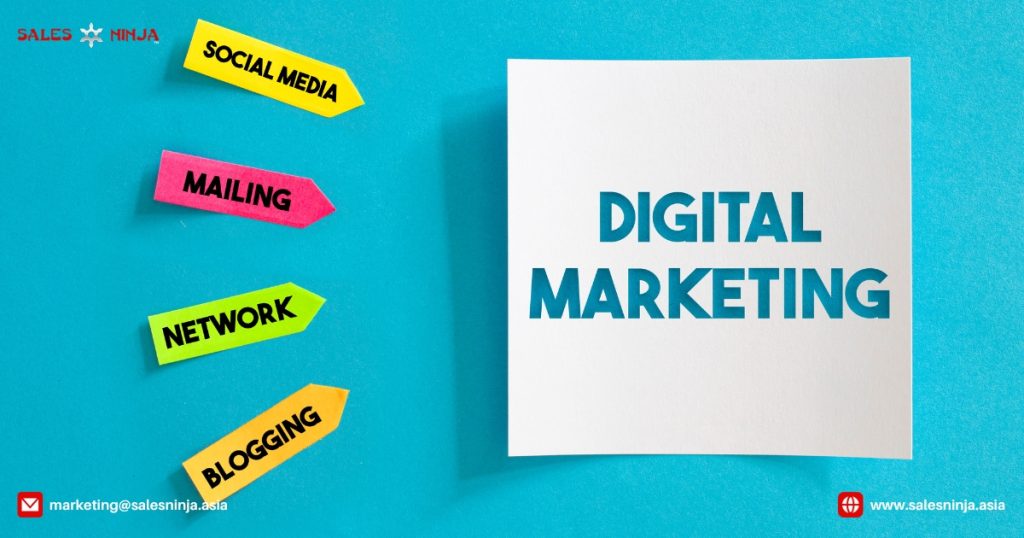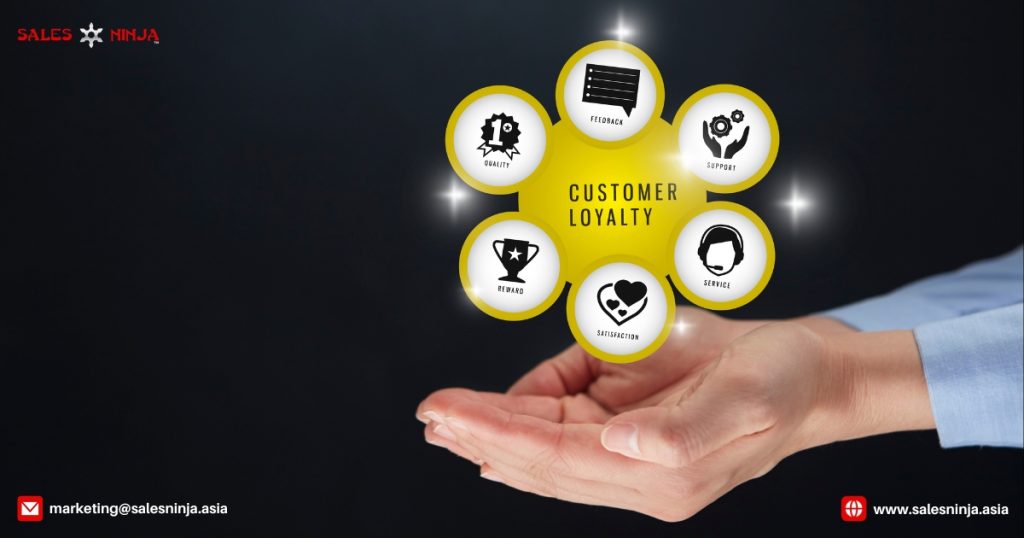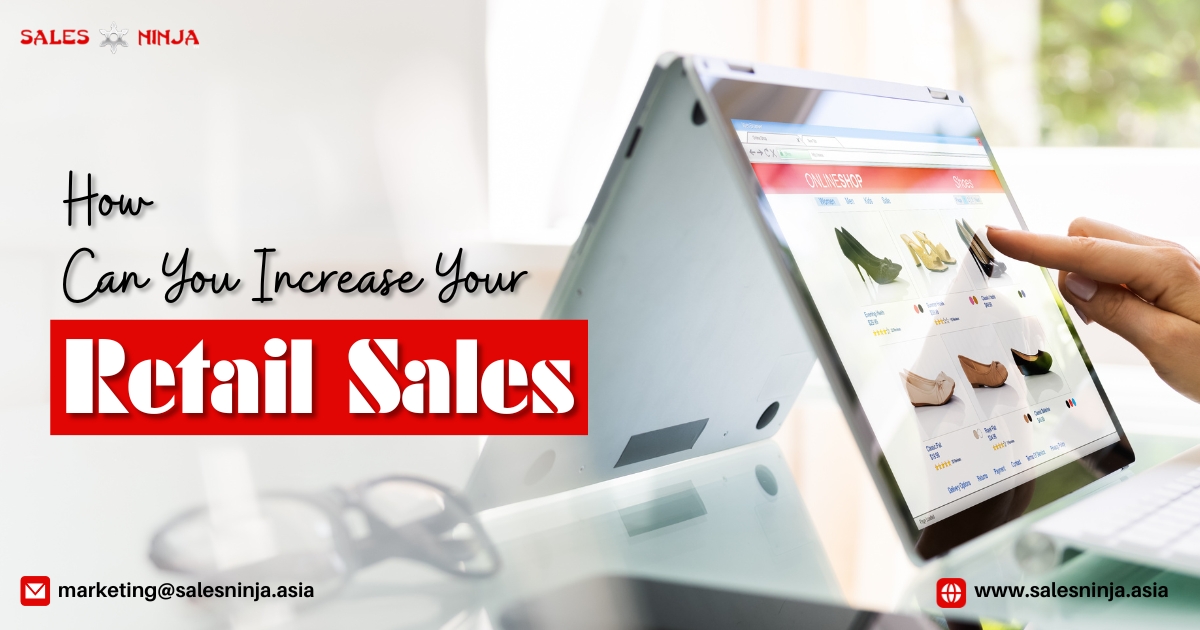The retail industry has a global reach, spanning from local markets to international horizons. This widespread presence contributes to the industry’s fierce competitiveness, making it unsurprising that retailers face sales challenges in this environment.
While it’s common to advise changing strategies for sales success, decisions should ideally be rooted in an understanding of consumer behaviour, which is fundamentally a psychological aspect. Hence, to enhance sales consistently, businesses must positively influence customers’ perceptions of their products, brands, and services.
So, let’s explore a range of strategies that can help you reshape your customers’ perceptions and, in turn, drive consistent monthly sales growth.
Retail Sales Strategies: Increase Your Sales
By implementing the right tactics, you can not only boost your current sales but also build long-term customer relationships that will continue to bring in revenue. So how should you go about creating successful retail sales strategies?
1. Differentiate through exceptional customer service and a seamless shopping experience
Let’s break it down with some examples and insights. First off, what do we mean by exceptional customer service? It goes beyond just being polite or helpful to customers. It means going above and beyond their expectations, providing them with an unforgettable experience that they would want to come back for.
For instance, let’s say a customer comes into your store looking for a specific product but can’t seem to find it on the shelves. Instead of simply telling them “Sorry, we don’t have it,” go the extra mile and offer alternatives or even check if another location has it in stock. This small effort shows that you genuinely care about helping the customer find what they need.

Moreover, having well-trained staff who are knowledgeable about your products is crucial in providing excellent customer service. They should be able to answer any questions or concerns promptly and accurately. Customers appreciate when someone takes the time to understand their needs rather than just pushing for a sale.
Now onto creating a seamless shopping experience – this encompasses everything from how easy it is for customers to navigate through your store or website, how quickly they can find what they’re looking for, payment options available, etc. One example of this could be implementing self-checkout kiosks in-store so customers can avoid long queues at peak hours.
Another could be offering online ordering with a curbside pickup option during busy holiday seasons when people may not have time to physically shop. In today’s digital age where convenience is key, ensuring that both offline and online channels provide hassle-free experiences will give you an edge over competitors who may still rely solely on traditional methods.
Happy customers are more likely to become repeat customers and even recommend your brand to others. So go ahead, and make it a priority for your business. Train your staff, improve processes, and most importantly – put yourself in the shoes of the customer and think about what would make their experience exceptional. Trust me; they’ll thank you for their loyalty and increased sales for your retail business!
2. Strengthen your online presence with a user-friendly website and a wide selection of products
If you want to increase your retail sales, you must have a strong online presence. This means having a user-friendly website where customers can easily navigate and make purchases. Take inspiration from global brands like Amazon or Walmart who have intuitive websites with a wide selection of products for customers to choose from.
To achieve this, invest in building a professional and visually appealing website with easy-to-use features such as search bars, filters, and clear product categories. Besides, optimize your product descriptions with compelling visuals and detailed information to entice customers into making a purchase. Use high-quality images that showcase the product’s features and benefits.

Make sure the checkout process is smooth and secure so customers don’t abandon their shopping carts (such as credit/debit cards, PayPal or mobile wallets like Apple Pay or Google Wallet). In addition to an attractive website design, regularly update your inventory with new and popular products to keep customers interested and coming back for more.
Use social media platforms like Instagram or Facebook to showcase your latest offerings and engage with potential customers. Remember, having a strong online presence not only attracts new customers but also helps retain existing ones by providing them with convenient options for shopping anytime and anywhere. So take cues from successful brands and strengthen your online presence today!
3. Maintain product quality throughout the supply chain to build trust with customers
What makes a customer come back and purchase from your store again? Is it just because of competitive pricing or fancy marketing tactics? While those may be important factors in attracting customers initially, ultimately it all boils down to trust and satisfaction with the product they receive.
Think about it – would you continue buying from a retailer that consistently sells low-quality products? Probably not.
Customers value their hard-earned money and expect nothing but top-notch quality for what they pay for. That’s why as retailers, ensuring product quality is crucial in building trust and retaining customers. So how do we maintain product quality throughout the entire supply chain? Firstly, make sure to establish clear standards for product specifications at every stage of production. From sourcing raw materials to manufacturing processes and packaging procedures – everything must meet your predetermined criteria. This will ensure consistency in the final output regardless of which supplier or manufacturer produced it.

Secondly, conduct regular inspections and audits along each step of the supply chain. This includes checking incoming materials from suppliers as well as conducting thorough testing during production stages. By doing so, any potential issues can be identified early on before reaching consumers’ hands.
Thirdly, invest in proper storage facilities to preserve product quality during warehousing and transportation stages. For example, perishable goods need to be stored at specific temperatures while fragile items should be handled with care during shipping. Lastly (but certainly not least), train your employees on proper handling techniques when dealing with products within the supply chain process.
A well-trained team ensures that no mishandling occurs which could affect overall product quality. Now, let’s take a look at an example of a company that has successfully implemented this strategy – Apple. They are known for their high-quality products and one of the ways they achieve this is by maintaining strict standards throughout their supply chain. From sourcing materials to manufacturing processes and even in-store packaging, everything adheres to their set specifications.
So make sure to incorporate this strategy into your operations for long-term success.
4. Then, you need to invest in digital marketing to reach customers effectively
With more and more people turning to the Internet for their shopping needs, you must have an online presence to reach potential customers effectively. One way to invest in digital marketing is by creating a strong social media presence.
Social media platforms like Facebook, Instagram, and Twitter allow you to connect with your target audience directly and showcase your products or services. You can also use these platforms for targeted advertising based on the demographics, interests, and behaviours of potential customers.
Another effective strategy is search engine optimization (SEO). This involves optimizing your website content. So that it ranks higher on search engines when someone searches for keywords related to your business. By appearing at the top of search results, you increase the chances of attracting new customers who are actively looking for what you offer.
Email marketing is another powerful tool for reaching out to both existing and potential customers. Through email campaigns tailored specifically towards their interests or purchasing behavior, you can build brand loyalty and encourage repeat purchases.

In addition to these tactics, investing in influencer partnerships can also be beneficial. Collaborating with influencers who have a large following within your target market allows you access to their network while building credibility for your brand.
But don’t just take our word for it – statistics show that businesses who invest in digital marketing see up to 3 times more growth than those who rely solely on traditional methods! So why not make use of this ever-growing platform?
5. Implement and manage customer loyalty programs to boost sales and retain customers
One of the most effective strategies that can significantly boost your sales and retain customers is – implementing and managing customer loyalty programs. That means rewarding loyal customers for their continued support and encouraging them to keep coming back to your store. This not only increases customer retention but also drives repeat purchases, ultimately leading to an increase in overall retail sales.
Now exactly how you can implement and manage these programs? Let me break it down for you with some examples:
- Points-based system: This is the most common type of loyalty program where customers earn points on every purchase they make. These points can then be redeemed for discounts or free products/services at a later time. For example, Sephora’s Beauty Insider program allows members to accumulate points on each purchase which can then be redeemed for various rewards such as deluxe samples or exclusive experiences.
- Tiered membership: Another effective way of retaining customers through loyalty programs is by offering tiered memberships based on their spending levels. The more they spend, the higher level. They reach with better perks and benefits such as free shipping or early access to new products/ promotions.
- Personalized rewards: In today’s digital age, collecting data about your customers’ preferences has become easier than ever before. Use this data wisely by customizing rewards based on their shopping habits and interests. For instance, Starbucks offers personalized drink recommendations and bonus stars (points) through its app based on previous purchases.

These are just a few examples of how different businesses have successfully implemented customer loyalty programs. Do you know why these programs work so well? Because they create emotional connections with customers by making them feel valued.
So don’t wait any longer, start brainstorming ideas on how you can create an effective loyalty program that suits your business model and appeals to your target audience. Remember, happy customers lead to increased sales!
6 Keep up with industry trends and insights to make informed decisions
Industry trends refer to the current patterns or movements in a specific market or sector. They can include changes in consumer behavior, emerging technologies, popular products/services, and more. By staying updated on these trends, you gain valuable insights into what’s hot in the market and what consumers are interested in. Now let’s talk about how this helps increase your retail sales.
By paying attention to industry trends and insights, you can make informed decisions regarding your business operations. For example, if there is a trend towards eco-friendly products among consumers, incorporating sustainable practices into your business can attract more customers who align with those

values. Moreover, staying on top of industry trends also allows you to stay ahead of competitors. If everyone else is offering a particular product or service that is currently trending but you’re not aware of it. Because you haven’t been following industry news – well then, you’ll be missing out on potential sales opportunities!
So –
- Keep an eye on reputable websites such as trade magazines/journals related to your field. They often publish articles highlighting new developments or upcoming trends in the market.
- Attend conferences/events related to your industry to have firsthand exposure to current happenings and networking opportunities where you can learn from other businesses’ experiences.
- Social media platforms like Twitter have hashtags dedicated specifically to discussions around certain industries (#retailtrends #fashionindustry),. So follow relevant accounts/hashtags for updates.
Start paying attention to these market movements and see how they positively impact your retail sales!
7. Be adaptable and willing to reshape your business model to align with evolving consumer preferences and market trends
As a sales training provider, it is our goal to help retailers increase their sales and ultimately grow their businesses. One strategy that we highly recommend for achieving this is being adaptable and willing to reshape your business model in order to align with evolving consumer preferences and market trends. So what exactly does this mean?
Essentially, as the world around us changes, so do the needs and wants of consumers. This can be seen through various shifts in technology, social values, economic conditions, and more. In order for retailers to stay relevant and continue attracting customers. They must be able to adapt their business models accordingly. One example of a company that has successfully done this is Netflix.
Originally starting out as a DVD rental service by mail, they quickly adapted when streaming services became popular. By shifting their business model from physical rentals to online streaming subscriptions. They were able to keep up with changing consumer behavior and maintain their position as a top player in the entertainment industry.

Another important aspect of being adaptable is staying on top of market trends. For instance, if there is an increasing demand for sustainable products or eco-friendly packaging options among consumers, etailers should consider incorporating these practices into their business model. This not only shows that you are aware of current trends but also appeals to socially conscious customers who may be more likely to support your brand.
In addition to keeping up with external factors such as consumer preferences and market trends. It’s also important for retailers to regularly review internal processes within their business model. Are there any inefficiencies or outdated methods that could be improved upon?
Perhaps implementing new technology or streamlining certain tasks could lead to increased productivity which translates into higher profits. Ultimately, being adaptable means having the ability and willingness to change course when necessary in order to improve your retail operations. The greatest Albert Einstein said, ‘The measure of intelligence is the ability to change’. In this case, doing so allows you to stay ahead of competitors while meeting customer demands effectively. So don’t be afraid to reshape your business model when needed.
Let’s work together towards achieving even greater success
Increasing retail sales every single month requires a multifaceted approach. By implementing these tactics with dedication and persistence, you can see significant growth in your retail business. And most importantly, never underestimate the importance of investing in proper training programs for yourself and your staff.
Thank you for reading our insights on how to boost retail sales! To receive more valuable tips like this one directly in your inbox or learn about our top-rated retail sales training programs designed specifically for businesses like yours, follow our website or contact us today. Let’s work together towards achieving even greater success in the world of retail!
Additionally, we are pleased to announce the availability of a new public training program titled ‘B2B Sales Leadership: Leading Your B2B Sales Team to Achieve 2024 Sales Targets‘. This comprehensive program is designed to equip you with proven sales management techniques. And AI tools to excel in sales leadership and effectively manage the B2B sales process.
If this program piques your interest, we invite you to review the attached brochure for a detailed program outline. Should you have any inquiries or wish to discuss further details, please feel free to reach out to our dedicated team: +6016 220 7000 (WHATSAPP)/marketing@salesninja.asia






Leave A Comment